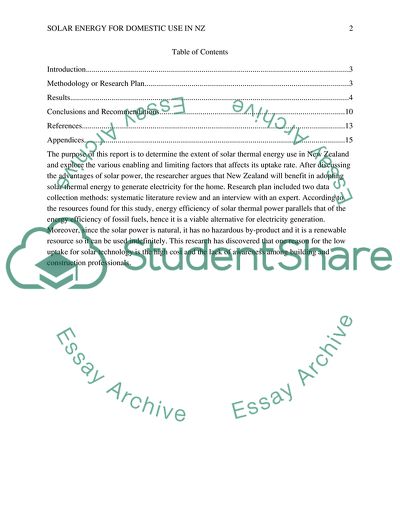Cite this document
(Maximizing Solar Power: Solar Thermal Energy for Domestic Use in New Coursework Example | Topics and Well Written Essays - 2750 words, n.d.)
Maximizing Solar Power: Solar Thermal Energy for Domestic Use in New Coursework Example | Topics and Well Written Essays - 2750 words. https://studentshare.org/engineering-and-construction/1768353-how-efficent-is-solar-energy-for-an-individual-house-domestic-use-in-new-zealand
Maximizing Solar Power: Solar Thermal Energy for Domestic Use in New Coursework Example | Topics and Well Written Essays - 2750 words. https://studentshare.org/engineering-and-construction/1768353-how-efficent-is-solar-energy-for-an-individual-house-domestic-use-in-new-zealand
(Maximizing Solar Power: Solar Thermal Energy for Domestic Use in New Coursework Example | Topics and Well Written Essays - 2750 Words)
Maximizing Solar Power: Solar Thermal Energy for Domestic Use in New Coursework Example | Topics and Well Written Essays - 2750 Words. https://studentshare.org/engineering-and-construction/1768353-how-efficent-is-solar-energy-for-an-individual-house-domestic-use-in-new-zealand.
Maximizing Solar Power: Solar Thermal Energy for Domestic Use in New Coursework Example | Topics and Well Written Essays - 2750 Words. https://studentshare.org/engineering-and-construction/1768353-how-efficent-is-solar-energy-for-an-individual-house-domestic-use-in-new-zealand.
“Maximizing Solar Power: Solar Thermal Energy for Domestic Use in New Coursework Example | Topics and Well Written Essays - 2750 Words”. https://studentshare.org/engineering-and-construction/1768353-how-efficent-is-solar-energy-for-an-individual-house-domestic-use-in-new-zealand.


